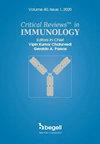头颈部鳞状细胞癌代谢相关预后生物标志物和免疫特征的鉴定
IF 0.9
4区 医学
Q4 IMMUNOLOGY
引用次数: 0
摘要
我们旨在确定一种有效的代谢亚型和风险评分,以预测头颈部鳞状细胞癌(HNSCC)的生存率和免疫疗法反应。数据来自在线数据库。我们使用一系列生物信息学方法筛选了正常组和肿瘤组之间重要的预后代谢相关基因。根据筛选出的预后基因,我们进行了亚型分析,以确定HNSCC中明显不同的亚型。然后,我们研究了不同亚型的生存率、免疫特征和标志性差异。我们利用 LASSO 来确定构建风险评分模型的最佳基因。最后,我们分析了不同亚型的风险评分样本分布情况。共筛选出32个对预后有明显影响的代谢相关基因,并将所有样本分为两个亚型:群组1和群组2。第 1 组的生存率较低。在两个群组之间观察到了不同的免疫细胞浸润(CD8 T细胞、巨噬细胞和调节性T细胞)和免疫检查点基因表达(PD-1和CLAT-4)。风险评分模型涉及12个最佳基因,高风险组的生存率较低。群组1包含更多的高风险样本(60%)。最后,四个基因CAV1、GGT6、PYGL和HS3ST1被认定与免疫细胞显著相关,这些基因在正常口腔上皮细胞和HNSCC细胞中的表达存在差异。该研究中的亚型和风险评分模型为预后和免疫治疗反应提供了一种有前景的生物标志物。本文章由计算机程序翻译,如有差异,请以英文原文为准。
Identification of Metabolism-Related Prognostic Biomarkers and Immune Features of Head and Neck Squamous Cell Carcinoma
We aimed to identify an effective metabolic subtype and risk score to predict survival and immunotherapy response in head and neck squamous cell carcinoma (HNSCC). Data were obtained from an online database. We screened significant prognostic metabolism-related genes between the normal and tumor groups using a series of bioinformatics methods. Based on the selected prognostic genes, we conducted a subtype analysis to identify significantly different subtypes in HNSCC. We then investigated survival, immune features, and hallmark differences among different subtypes. LASSO was utilized to identify optimal genes for the risk score model construction. Finally, distribution of the risk score samples was analyzed for different subtypes. A total of 32 significantly prognostic metabolism-related genes were screened, and all samples were grouped into two subtypes: cluster 1 and cluster 2. Cluster 1 had worse survival. Different immune cell infiltration (CD8 T cells, macrophages, and regulatory T cells) and immune checkpoint gene expression (PD-1 and CLAT-4) were observed between the two clusters. Twelve optimal genes were involved in risk score model, and high-risk group had poorer survival. Cluster 1 contained more high-risk samples (60%). Finally, four genes CAV1, GGT6, PYGL, and HS3ST1 were identified as significantly related to immune cells, and these genes were differentially expressed in the normal oral epithelial cells and HNSCC cells. The subtypes and risk score model in the study provide a promising biomarker for prognosis and immunotherapy response.
求助全文
通过发布文献求助,成功后即可免费获取论文全文。
去求助
来源期刊
CiteScore
2.60
自引率
0.00%
发文量
14
审稿时长
>12 weeks
期刊介绍:
Immunology covers a broad spectrum of investigations at the genes, molecular, cellular, organ and system levels to reveal defense mechanisms against pathogens as well as protection against tumors and autoimmune diseases. The great advances in immunology in recent years make this field one of the most dynamic and rapidly growing in medical sciences. Critical ReviewsTM in Immunology (CRI) seeks to present a balanced overview of contemporary adaptive and innate immune responses related to autoimmunity, tumor, microbe, transplantation, neuroimmunology, immune regulation and immunotherapy from basic to translational aspects in health and disease. The articles that appear in CRI are mostly obtained by invitations to active investigators. But the journal will also consider proposals from the scientific community. Interested investigators should send their inquiries to the editor before submitting a manuscript.

 求助内容:
求助内容: 应助结果提醒方式:
应助结果提醒方式:


